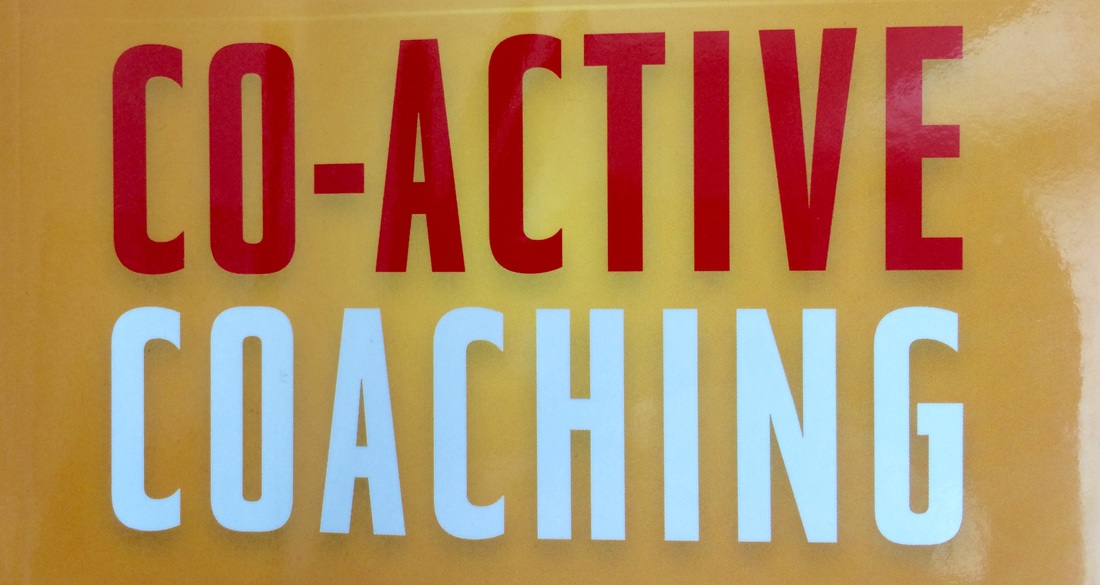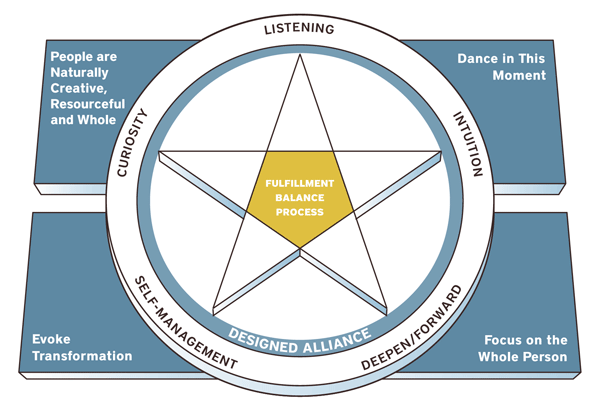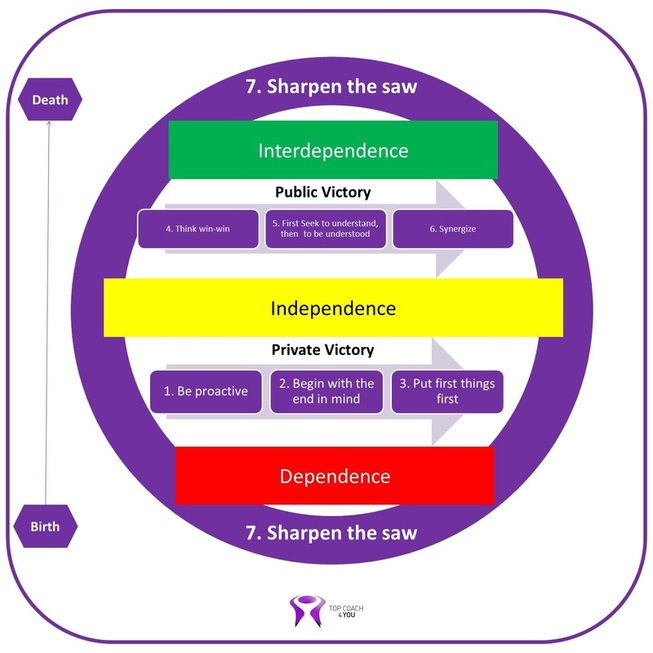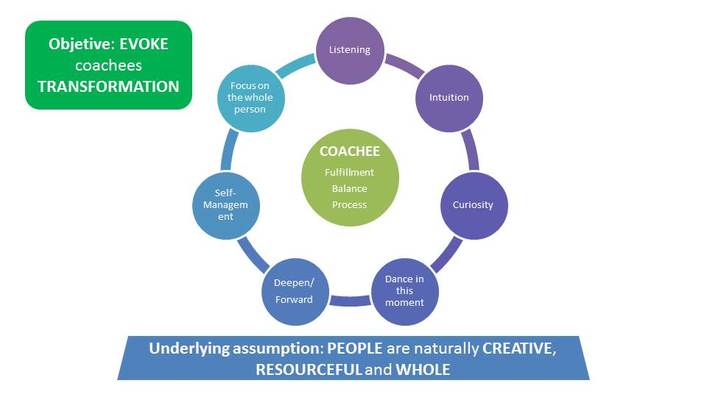The book that helped define the field of Professional Coaching I recently enrolled with Noble Manhattan Coaching whose founder and CEO is Gerard O'Donovan. You may not know him but after meeting him in person last year in October when he visited Madrid to start Noble Manhattans' operations as Coaching Institute in Spain, I was so impressed and inspired that I decided to sign up for the Noble Manhattan Coaching Practitioner Coach Diploma (DipNMC) course. One of the exercises of the 350 hour course is to write a personal book critique about the course book "Co-Active Coaching", written by Karen and Henry Kimsey-House, Phillip Sandahl and Laura Whitworth , being the four exceptional and experienced coaches and true pioneers of the coaching profession. Karen, Henry and Laura were co-founders of the Coaches Training Institute in 1992. Phillip is co-founder and principal of Team Coaching International and a former senior faculty member of CTI. I wanted to include here the special dedication for Laura Whitworth, who passed away February 28, 2007 written by Karen, Henry and Phillip. "Laura was the co-creator of the Co-Active model together with Karen and Henry, a recognized leader in the development of the coaching profession, and co-author of the first two editions of the book. Laura Whitworth died February 28, 2007, after a courageous battle with cancer. You could not find two words in English language more appropriate for her: courageous battle. What she believed in, she fought for. If you were ever her client, or participated in a program Laura led, you know. She was fighting for you. She was a visionary and a pioneer; she was a compelling force. Her relentless commitment to life fully lived is a model and inspiration. That life force named Laura Whitworth created the seeds from which the coaching tree has grown; she didn't do it alone, of course, but her tenacity certainly made sure it grew. Laura founded The Coaches Training Institute with Karen and Henry and created the Co-Active coaching model and training with them. Together they created an enormously powerful leadership program, a transformative life experience for participants. Just ask them. She was instrumental in the development and growth of the coaching profession and was one of the first to call the work she did "coaching". We would say we miss her - and naturally we do. But her presence, her spirit, are so alive in the work today that we feel her with us still. We dedicate this third edition to Laura and the courageous battle she stood for: a life fully lived. In every moment we are given. With every breathe we breathe." I did read the third Edition (2011) and decided to publish my book critique here in my personal blog. A personal critique is not an essay. It expresses what is good and what needs to be improved from my personal perspective. You can buy the book on Amazon and I pass you here the direct link for the ones that can't wait. The objectives of the authors with this third edition are fourfold:
The book is divided in three parts:
The Co-Active Coaching Model Co-Active coaching is not about the results or the problems of the coaching conversation. It is chiefly about discovery, awareness and choice. It is a way of effectively empowering people to find their own answers, encouraging and supporting them on the path as they continue to make important choices. The underlying principles are:
Regarding the coachee the model assumes:
There a four cornerstones in the model:
As said before, there are three principles at the heart of the model that constitute the deeper motivation behind the coaching for the coachee:
And what the coach brings to the model are the 5 contexts:
Now please have a look at the image below. You can see a blue circle named "Designed Alliance" that surrounds the Star that carries in its center the three principles and is surrounded itself by the 5 Contexts. It symbolizes the connection and the "Terms&Conditions" for the Co-Active relationship between the coach and the coachee. Image 1: The Co-Active Coaching Model I was also looking for some Youtube video explainers about the Co-Active Coaching model and found this one that I recommend. It was published in the channel of Federated Films. Here the official description of the video: "The San Francisco based Coaching Training Institute (CTI) commissioned Federated Films to produce an engaging animated explanation of their coaching model to help new and old students alike have an overview of the concepts built into the Co-Active model. " Video 1: How to use The Co-Active Model by CTI The Co-Active Relationship This relationship - where both coach and coachee are active - is characterized by a deep respect for the uniqueness of the coachee. Be yourself. Everyone else is already taken. Both coach and coachee are active in seeking to unfold the coachees full potential or solve the coachees problem where the coach focuses 100% on the coachee and the coachee focuses 100% on himself and his life. Both are at the same level. There is no superiority. The real power comes from this relationship, the interaction and the process. It does NOT come from the coach. The coach contributes his power to the relationship to make the relationship itself as powerful as possible to the full benefit of the coachee. Some personal reflections When I was reading chapter 8 about fulfillment, Stephen Covey's "The 7 habits of highly effective people" came immediately into my mind. Here a very nice video animation explaining the 7 habits. Video 2: The 7 Habits of Highly Effective People - Animation Specially the introduction of the big "A" agenda (What is your vision? Who are you becoming? What is present when life is most alive for you? and the little "a" agenda (Consists of goals, actions and accountability). Many of the key aspects of the Co-Active coaching model are reflected in habits 1 (Be proactive), 2 (Begin with the end in mind), 3 (Put first things first), 4 (Think win-win) and habit 5 (seek first to understand, then to be understood), where habits 6 (Synergize) and 7 (Sharpen the saw) are not part of the Co-Active coaching model but are key to become a highly effective coach. Please bear in mind that the 7 habits are built sequentially over a whole lifetime. Habits 1-3 (Including habit 7) once understood and mastered are called the "Private victory", while the mastery of habits 4-6 is called the "Public victory" and can only be achieved once you mastered habits 1-3 and 7. Image 2: The 7 habits and the Private and the Public Victory The Co-Active coaching model implies as the very key aspect Listening at level 2 and 3 and intrinsically it assumes that a coach who uses the model thinks win-win (habit 4), otherwise he would not be a coach. This further implies that a coach who wants to use the Co-Active coaching model needs quite some life experience and life time packed on his shoulders and very likely he will be working for the rest of his life on habits 5 and 6. To be honest, my biggest struggle since many years is habit 5 - Deep listening! Here the full list of the 7 habits:
Another interesting point brought up in the book was the relation between fulfillment and values where I liked very much the following statement: "The link between values and fulfillment is so obvious that it may be overlooked." The authors of the book say that fulfillment is to picture a person who is living according to what she values most. So fulfillment is a personal, individual thing and should not be confused with moral character, ethical behavior or principles one follows. So what is to be admired is not the value itself but the coachee´s ability to live that value fully in his life which finally leads to fulfillment. I do not fully agree with this statement. From my point of view, this could mean that if a coachee lived based on negative values, non ethical values and not based on character ethic towards a negative value based fulfillment, we as coaches would help to create a perfect monster. There is a masterpiece of Stephen Covey on Youtube I want to share with you titled "Foundational principles - Character and personality" in order to differentiate the character ethic from the personality ethic. Video 3: Stephen R. Covey - Foundational principles - Character and personality I think if a coach lives trying to master "The 7 habits of highly effective people" and uses the Co-Active coaching model, he will become a Highly Effective Coach. Positive aspects of the book The book itself is easy to read and to understand. The book is well structured and full of coaching conversation examples where the 5 contexts and the cornerstones can be understood in a real coaching session context. It is a real practical book with great guidelines for the professional coach and I would call it the Professional Coach's Session Manual. The tool-kit is very helpful to better understand, learn and apply the Co-Active coaching model to your own coaching. Here again the link so you can access and download the templates and audio files. Aspects that could be improved I missed more illustrations and graphical elements in the book itself as well as some videos to show how the different elements of Co-Active coaching work in a real coaching session. The tools are pdf's but we all know that the key is how you run the real session, how you manage the conversation and dance with the coachee. You can't really dance looking at a sheet of paper with the guidelines. I suggest that the authors create a Youtube-Channel where they could show sessions and demonstrate key aspects and the application of the 5 contexts. From a methodological point of view the model is well explained but to me the four cornerstones are a mixture of underlying assumptions, objectives and recommendations about what to do.
This makes it difficult to differentiate from the 5 contexts (Recommendations) as those should be rather 7 adding the two recommendations from the cornerstones to the existing 5. Image 3: My adjusted version of the Co-Active coaching model So now it is up to you. Please feel free to leave your comments here and I would be glad to openly discuss your points of view with the audience.
2 Comments
9/7/2019 06:32:55 pm
She was a visionary and a pioneer; she was a compelling force. Her relentless commitment to life fully lived is a model and inspiration. That life force named Laura Whitworth created the seeds from which the coaching tree has grown; she didn't do it alone, of course, but her tenacity certainly made sure it grew.
Reply
10/4/2019 12:00:19 am
The tools are pdf's but we all know that the key is how you run the real session, how you manage the conversation and dance with the coachee. You can't really dance looking at a sheet of paper with the guidelines. I suggest that the authors create a Youtube-Channel where they could show sessions and demonstrate key aspects and the application of the 5 contexts
Reply
Leave a Reply. |
Andreas JaffkeBorn in Germany 1967. Living since 1999 in Spain. Married and father of three. Evangelist of Stephen R. Covey's "The 7 habits of highly effective people". Humble learner who helps others to get the best out of themselves. Archives
June 2017
Categories
All
|




 RSS Feed
RSS Feed
